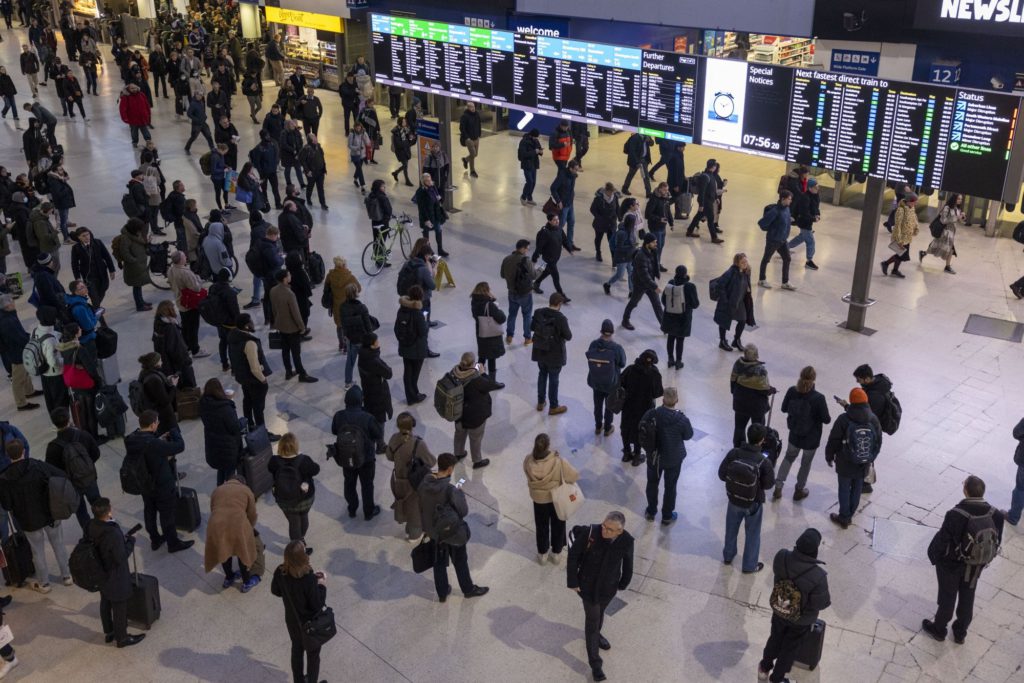UK wages are rising at a near unprecedented pace, heaping pressure on the Bank of England to deliver a 10th consecutive interest-rate increase next month.
(Bloomberg) — UK wages are rising at a near unprecedented pace, heaping pressure on the Bank of England to deliver a 10th consecutive interest-rate increase next month.
Average earnings excluding bonuses were 6.4% higher in the three months through November than a year earlier, the Office for National Statistics said Tuesday. That’s the biggest increase since records began in 2001, excluding the height of the coronavirus pandemic.
The figures suggest the labor market remains too tight for comfort at the central bank, where officials fear double-digit inflation will be harder to tame if pay keeps growing at its current pace. In an effort to avert a wage-price spiral, the central bank has raised rates from 0.1% to 3.5% and is expected to announce a further 50 basis-point hike in February.
“Together with last week’s stronger than expected GDP data, we anticipate this will provide enough evidence for the Bank of England to clinch another interest rate increase at its February meeting,” said Yael Selfin, chief economist at KPMG UK.
The pound erased losses against the dollar following the data, trading broadly flat on the day at $1.2193.
What Bloomberg Economics Says …
“Another upside surprise for wage growth has muddied the Bank of England’s case for a downshift at its February meeting. With the labor market only cooling slowly and pay growth proving sticky, a return to smaller increments looks unlikely next month. We now expect a 50-basis point hike, up from 25 bps previously.”
—Ana Andrade, Bloomberg Economics. Click for the REACT.
Labor shortages have driven unemployment to record lows below 4%, giving workers unprecedented bargaining power. The pressure is most acute in the private sector, where wages rose 7.2%. In the public sector, they increased just 3.3%, well below the current 10.7% inflation rate.
“The UK labor market remains resilient with a record number of employees on payrolls,” Chancellor of the Exchequer Jeremy Hunt said in a statement. “The single best way to help people’s wages go further is to stick to our plan to halve inflation this year. We must not do anything that risks permanently embedding high prices into our economy.”
The squeeze on living standards has triggered a wave of strike action in recent months, as workers from nurses and paramedics to bus drivers and civil servants press for pay rises to compensate for inflation.
“The UK’s tight labor market is one of the top challenges preventing our businesses and economy from growing,” said Jane Gratton, Head of People Policy at the British Chambers of Commerce. “It’s no use simply talking about growth if we are not prepared to take action on it.
“With an anemic economy and low productivity, government must take immediate steps to ease the considerable labor pressures on businesses — we can’t afford to wait any longer.”
The Office for National Statistics said that 467,000 working days were lost due to labor disputes in November, the highest since 2011. That figure will rise sharply in December, when strikes escalated. In real terms, pay fell 2.6% from a year earlier.
“The main areas affected being transport and communications, and education,” said Darren Morgan, ONS’s director of economic statistics. “The period since June has now seen more days lost than in any six months for over 30 years.”
There were some signs that the labor market may be turning in response to the economic outlook, a picture that is emerging in recent surveys.
- Vacancies fell 75,000 in December to 1.16 million, the seventh monthly drop.
- Employers are beginning to lay off workers amid the deteriorating economic backdrop. The number of employees per thousand made redundant climbed to 3.4 from 1.1 in the previous three-month period.
- The number of hours worked fell 1% on quarter.
“The fall in the number of vacancies reflects uncertainty across industries, as survey respondents continue to cite economic pressures as a factor in holding back on recruitment,” the ONS said in a statement.
Meanwhile, more people returned to the workforce in the quarter through November. Inactivity, which measures people who are neither working nor want to work, fell by 0.1 of a point to 21.5% of the workforce.
The 55,000 person drop in inactivity was most pronounced among those aged 16 to 24 and the older group of workers from 50 to 64.
The BOE expects unemployment to climb above 6% over the next three years. However, businesses may choose to freeze headcount rather than make redundancies, given the recent difficulties in hiring.
“The labour market remains extremely tight and our members continue to report serious difficulties in finding the skills they need,” said Kitty Ussher, chief economist of the Institute of Directors. “However, this morning’s data suggests that, from a business point of view, some of the pressures we have seen over the last year may be beginning to settle.”
–With assistance from Libby Cherry and Brendan Scott.
(Updates with comment from fourth paragraph.)
More stories like this are available on bloomberg.com
©2023 Bloomberg L.P.










